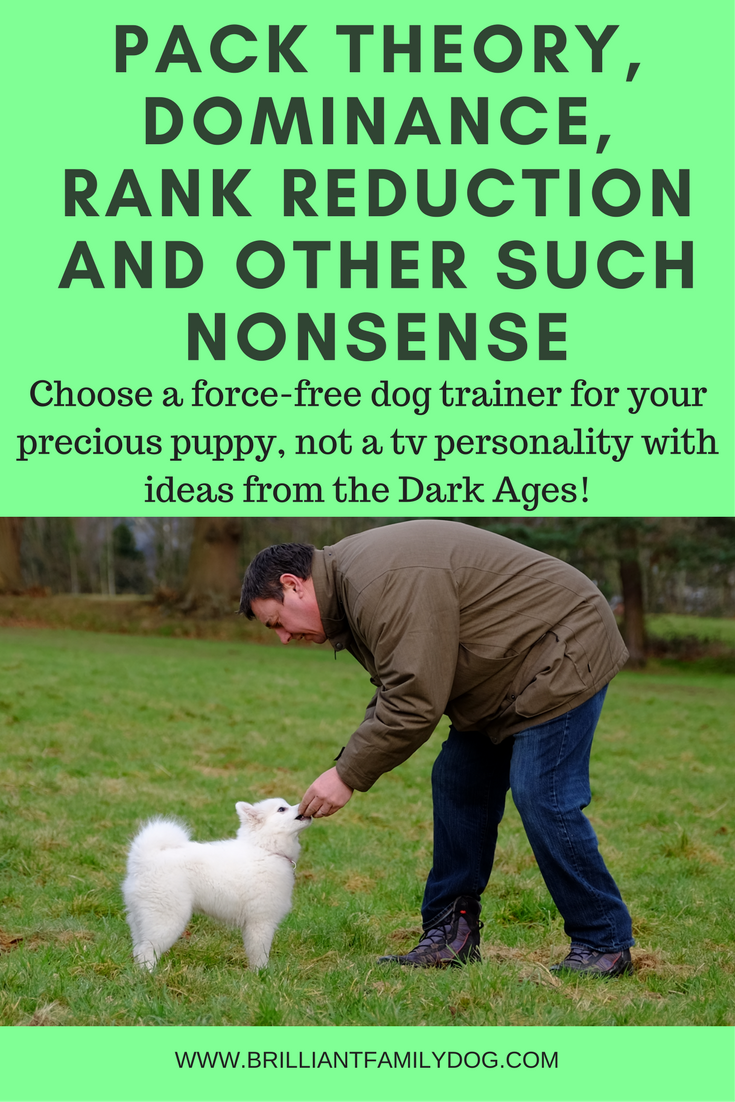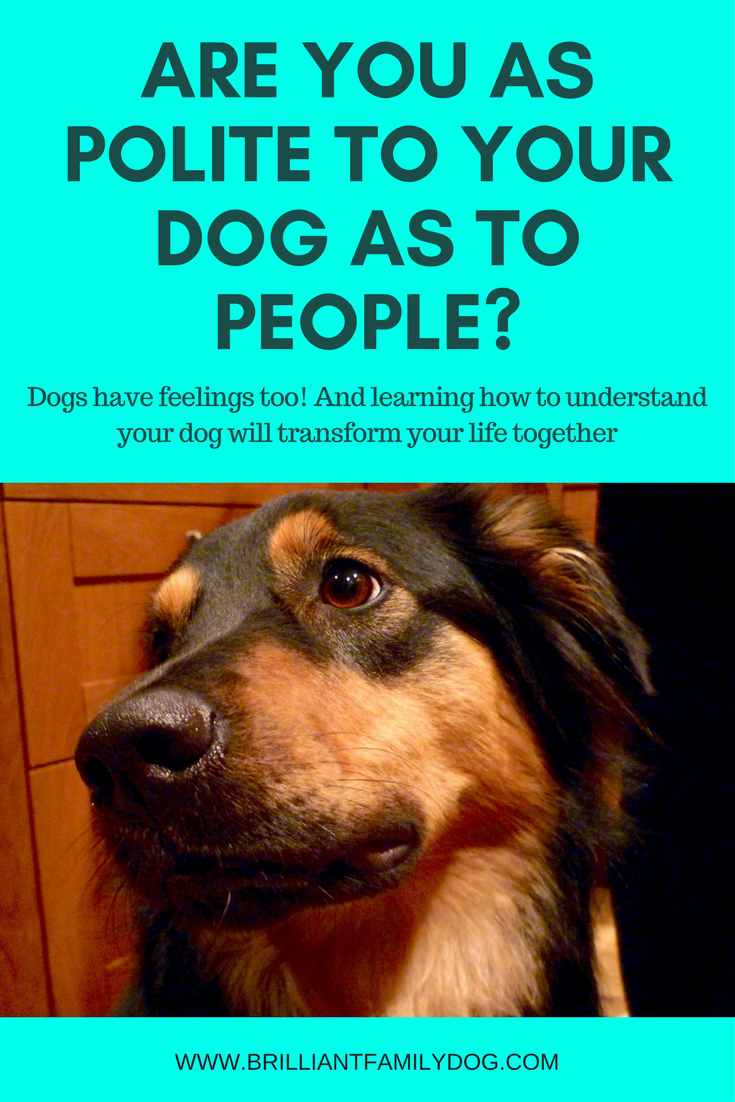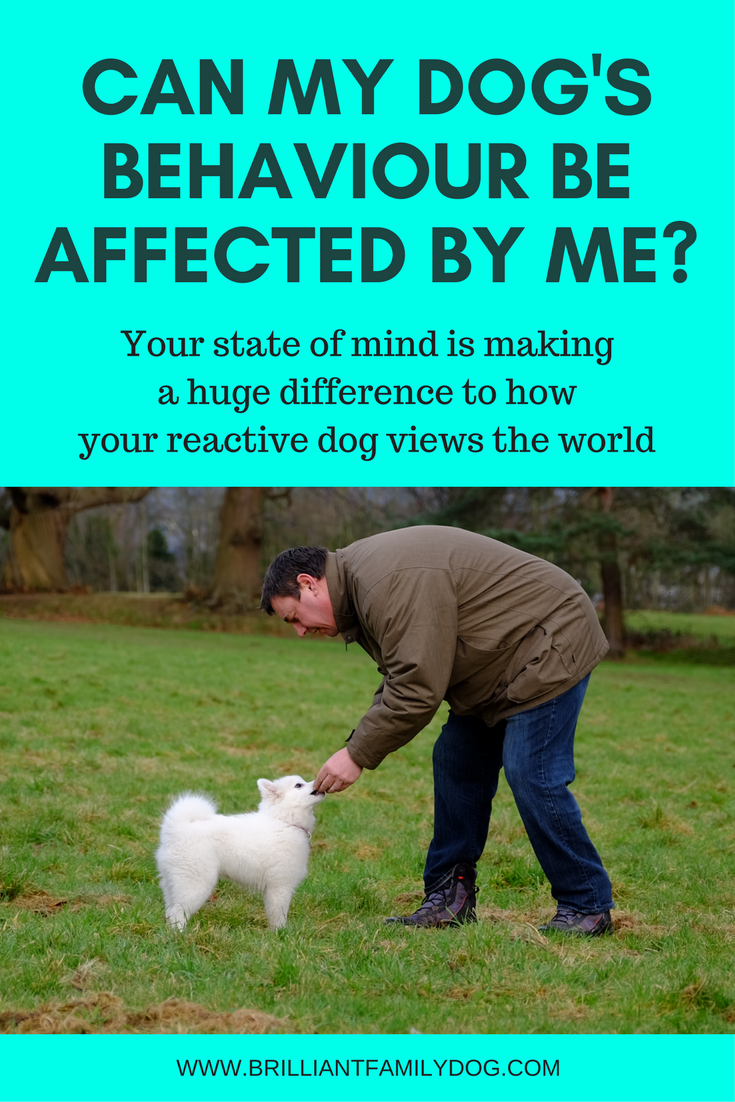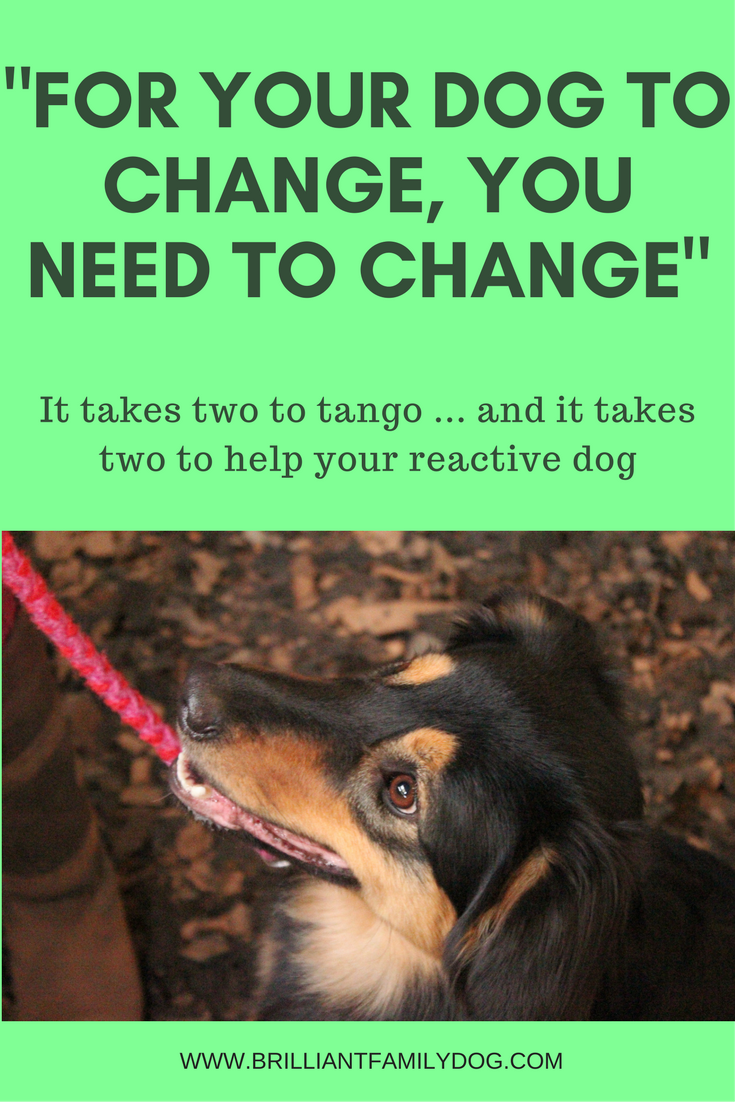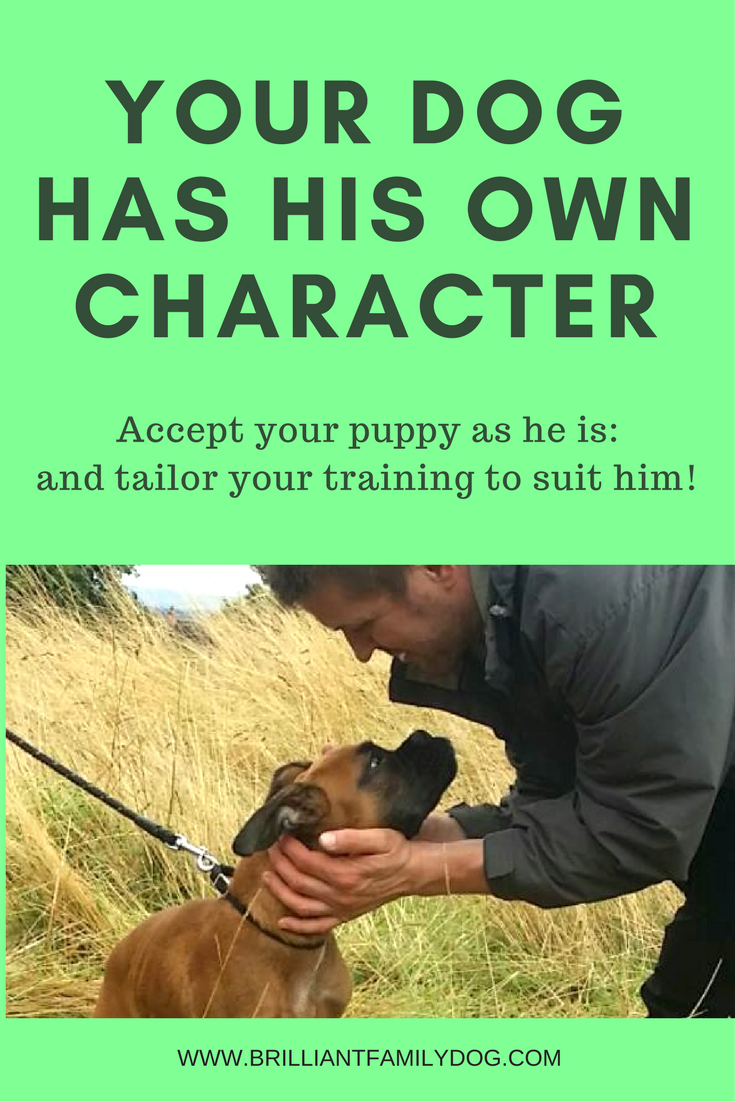There are plenty of people about who perpetuate the myths that
dogs are stubborn,
dogs are obstinate,
dogs are trying to rule you/your family/the world,
let them eat before you and they'll turn into a ravening monster,
if you give them an inch they’ll take a mile,
and so on and on …
If you’re repeating it because you were told by someone you thought knew what they were talking about, you’ll need to think again (and stop repeating it!)
You may have heard this from a tv personality who sets himself up as a dog trainer; you may have heard it from someone who calls themselves a dog trainer - albeit without any respectable qualifications. You may have heard it from your vet or groomer whom you trust, but who is not qualified in dog behaviour.
The fact is, that whoever you heard it from is talking through their hat.
There was a stage, many, many years ago, when people formulated the Pack Theory model. It was based on erroneous data and has since been completely discredited - even by those who promoted it in the first place! There is no basis in fact for “pack theory”, “dominance”, “rank reduction”, or anything else you may have heard of which works through punishment, pain, or distress.
THIS FREE ECOURSE IS A BONUS FOR YOU WHEN YOU SIGN UP TO RECEIVE EDUCATIONAL EMAILS AND OCCASIONAL OFFERS FROM ME. YOU CAN UNSUBSCRIBE AT ANY TIME.
Privacy Policy
You wouldn’t put your child into the hands of an unqualified, self-proclaimed, teacher who came out with all this nonsense. Why do you listen to a so-called dog trainer who says the same stuff?
I get that the internet is a confusing place! There are so many opinions declared to be gospel truth. You have to have your b******t glasses on when you read much of it!
What else is outdated claptrap?
I have actually heard people say “Yes, this new approach must be right, but we can’t throw the baby out with the bathwater …” hoping against hope that the things they have been inflicting on their dog will still magically work, despite being disproven and discredited.
Your ancestors could be forgiven for thinking the earth is flat. They didn’t know. They made best guesses based on religious beliefs and the total absence of factual knowledge. But we know now. So anyone who says “I get that the earth is spherical, but maybe some bits of it are still flat,” would be dismissed as deluded.
We know now that our weather happens because of all the events and influences around the globe that affect it. We no longer think that a drought was caused by some sin we had committed. You would laugh at someone who said “Yes, I know about El Nino, but I still think that if we didn’t allow same-sex marriage we wouldn’t be suffering this adverse weather.”
The enormous developments in scientific data-collection have proven what to accept as truth. The science behind the modern view of dog training is just as valid.
If you say, “Yes, I can see the dog’s brain is wired this way, but I still think that if he goes through a doorway before me he is going to take over the house,” you are putting yourself alongside the flat-earth proponent and the mediaeval weather analyst above who we have just dismissed as WRONG.
Dogs do what works
It’s fortunate for us that dogs haven’t read all these crazy theories. Dogs do what works. Dogs have always done what works and they will continue to do so. Their brains are the same as they ever were.
And like all beings, their life is focussed on gaining pleasure and avoiding pain. If you think any of the weird practices promulgated by those flat-earthers and tv personalities who think they are dog trainers work - then maybe your dog is cleverer than you and has worked out how to please you by complying with your demands, however barmy they may seem to him.
Chickens were used in the last war to spot downed airmen in tiny orange life-rafts - possibly miles below the spotter plane. The chickens were very effective, with their amazing eyesight, at picking a dot of orange out of the churning waves.
Did they do this because they wanted to help the war effort? Did they do it because they disliked Hitler and all he stood for? Did they do it because they didn’t like the colour orange? Of course not! They did it because they had learned that if they pecked at a tiny orange dot they would be given some grain. The chickens were working on the simple system of
Reward what you like and that action is more likely to be repeated
They didn’t need to be threatened, prodded with metal spikes, or given electric shocks if they made a mistake. They just got rewarded when they did the required action. Simple!
So if someone tells you that your dog lying on the sofa is trying to take over your home - rather than that it is just a comfortable place with a good vantage point; or that your dog preceding you down the stairs is going to lead to mayhem and bloodshed - rather than that it’s just safer to let the dog whizz downstairs without tripping you up; or even that feeding your dog before you eat will lead to him exceeding his rank - rather than you simply getting the chores done before you settle down for the evening; then treat these statements with the contempt they deserve.
NOTE: if your dog is guarding the sofa from you, pushing past you on the stairs without consideration, or begging while you eat, these are training issues and can be resolved by simple training.
Note that the same people who come out with this outdated stuff will often want you to use vicious devices of torture on your dog. Have nothing to do with anyone who suggests a spike/prong collar, or any electronic gadgets which will "instantly change your dog".
Dogs are not people
It can be beguiling to ascribe complex motives to your dog when he does something. Because we tend to ascribe human responses to dogs. But dogs are not humans! They are a different species and they don’t have all the hang-ups that we have when it comes to responding to situations.
“Why did she look at me like that? What is she trying to gain? What does she expect me to do? Does she not like me? Is she jealous of me? ….” we may say in our convoluted thought processes of whywhywhy. Your dog is so much simpler: “She looked at me. I looked back. End of story.”
“My mind is made up: don’t confuse me with the facts”
We all know intransigent people who will swear that black is white rather than accept they may be mistaken and should have a re-think. They may be repeating the old wives’ tales that have been fed to them all their lives.
But we don’t need to do that! We have plenty of access to well-researched material that shows us how to treat our dogs - with kindness, understanding (understanding of canine thoughts and fears, that is, not thinking that they are small people in fur coats), and effectiveness.
Apart from all the scientifically-proven reasons why this approach works, it makes us feel good too! No-one likes to be a martinet or a sergeant-major when dealing with their family (and if they do, then they have some serious problems) and it’s so much easier to deal with your dog in the same courteous and straightforward way.
Ensure that you look at what you’ve been doing with your dog, and excise anything that comes under the heading of “rank reduction”, “pack leadership”, “dominance”. Enjoy the new way of getting what you want from your companion. Ask him to do things, don't tell him.
And don’t worry about “the baby being thrown out with the bathwater” - there never was a baby in that particular tub in the first place!


